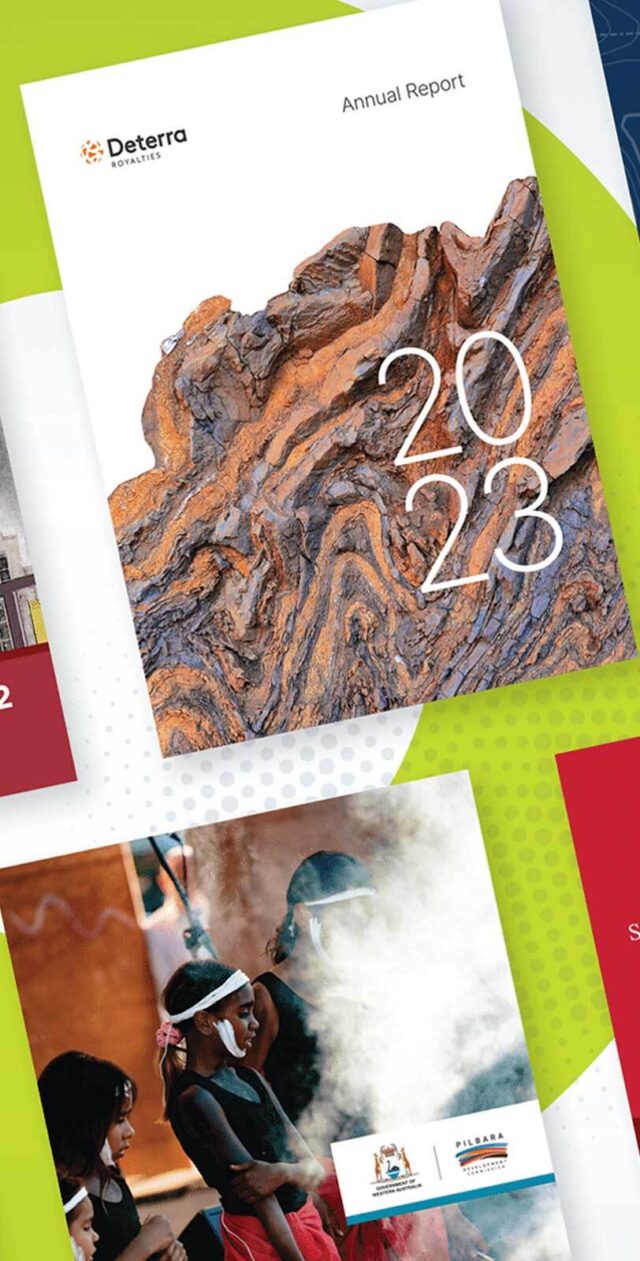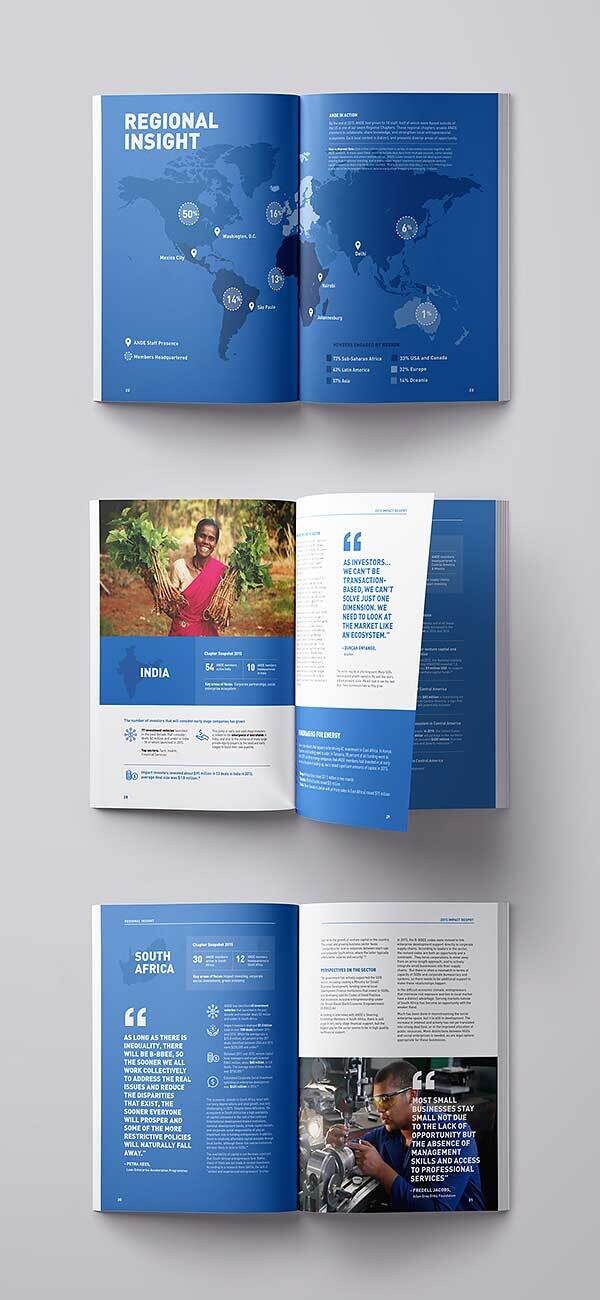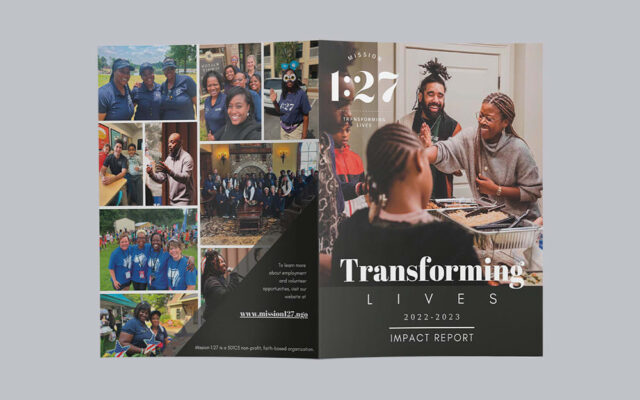Every organisation needs to communicate transparently with their stakeholders. Annual reports are one of the most formalised ways of providing this transparency. They offer a detailed record of a company's achievements, challenges, and financial results, allowing shareholders, investors, and other key stakeholders to assess past performance and gain insights into the future direction of the business. In today’s digital age, many companies provide online versions of their annual reports; however, printed versions remain highly relevant and offer a tangible experience of a showcase publication for businesses that digital versions cannot replicate.
Producing a document that reflects your company’s success.
The benefits of professional annual report printing
Investing in high-quality annual report printing can significantly impact how an organisation is perceived. Some of the key benefits include:
Professionalism
A professionally printed annual report clearly conveys attention to detail and commitment to quality. A well-produced report can reinforce the company’s brand and values.
Tangible Impact
A physical annual report offers a unique sensory experience, with the texture of the paper, the weight of the document, and even the smell of ink contributing to how a company’s message is received.
Longevity
Unlike digital files that can get lost in email inboxes or on hard drives, printed reports are more likely to be stored, shared, and referenced. They are a lasting record that serves as a reminder of the organisation’s accomplishments.
Versatility
Printed reports can be distributed at shareholder meetings, presented to potential investors, and shared at corporate events, making them versatile tools for communication and engagement.

Binding methods for annual reports
One of the decisions in annual report printing is choosing a suitable binding method. The binding not only impacts the aesthetic of the report but also its durability and usability. Some of the most used binding methods include:
Annual Report Printing & Perfect Binding
This method is one of the most popular for annual reports, particularly for thicker documents. With perfect binding, the pages are glued together at the spine with a strong adhesive, and a soft cover is then wrapped around the glued edges. The result is a sleek, professional-looking report with a flat spine that can accommodate larger volumes of content.
Annual Report Printing & Saddle Stitching
This method involves folding the pages in half and then stapling them along the fold. Saddle stitching is ideal for shorter reports, typically those with 40 pages or fewer. It offers a clean, simple finish and is more cost-effective than perfect binding, making it suitable for smaller organisations or those with limited budgets.
Annual Report Printing & Stapling
Basic stapling is generally the “go-to” for small and straightforward reports. While it doesn’t offer the polish of perfect binding or saddle stitching, it’s a practical option for minimal content and informal settings.

Annual report printing methods: Offset vs. Digital Printing
The method of printing you choose can affect the quality, cost, and time required to produce the report. Two methods are used for annual report printing: offset printing and digital printing.
Offset Printing for Annual Reports
This traditional printing technique is ideal for high-volume projects. In offset printing, the ink is transferred from a plate to a rubber blanket and then onto the paper. The advantages of offset printing include superior print quality, vibrant colours, and the ability to print on a wide range of paper stocks. It’s often more cost-effective for large print runs, as the per-unit cost decreases significantly with higher quantities.
Digital Printing for Annual Reports
Digital printing is a more modern technique that doesn’t require plates. Instead, digital files are sent directly to the printer, which makes this method faster and more affordable for small to medium print runs. Digital printing offers excellent quality and, with continuous advancements in printing technology, can match the level of precision and detail that offset printing provides for larger jobs. However, digital printing is often the best choice for shorter runs and when faster turnaround times are needed
Specialty print finishes to elevate your annual report
Businesses often incorporate specialty finishes to create an even more engaging annual report. Since the annual report is a showcase publication, these finishing touches add a sense of occasion and distinction to the document, ensuring it stands out.
Annual report printing & gloss lamination
Shiny, protective, and bold
Gloss lamination is a popular choice for annual report covers, and for a good reason. This finishing technique involves applying a shiny, smooth coating to the report's surface, which makes colours pop and images appear more vibrant. The result is a high-gloss finish that is visually striking and feels sleek to the touch.
Aside from enhancing the visual appeal, gloss lamination adds a protective layer to the document. This helps to guard against wear and tear, spills, and fingerprints, ensuring the report remains pristine throughout its lifecycle. Gloss lamination is especially effective for reports that include a lot of images, graphics, or infographics, as the shine adds a level of sophistication to the presentation.
Annual report printing & matt lamination
Subtle and professional
For a more subdued and elegant finish, matt lamination is an excellent alternative to gloss. While it doesn’t have the reflective quality of gloss, matt lamination offers a smooth, soft finish that exudes professionalism. It tones down the brightness of colours, giving the document a sophisticated, understated look.
Matt lamination is often preferred for text-heavy annual reports or for companies aiming for a refined corporate image. Its tactile experience is more muted than gloss, giving readers a sense of quality without overwhelming the senses. Additionally, like gloss lamination, it adds a layer of protection, making the report more durable and resistant to external damage.

Annual report printing & soft-touch lamination
A tactile experience
Soft-touch lamination is an increasingly popular option for companies looking to add an extra layer of luxury to their annual reports. This finishing technique creates a velvety texture that feels almost suede-like to the touch, offering a unique sensory experience that immediately sets your report apart from others.
While it shares some protective qualities with gloss and matt lamination, soft-touch lamination is all about creating a memorable interaction with the reader. The smooth, silky feel invites people to engage more with the report, making it a perfect choice for companies aiming to leave a lasting impression. The tactile sensation reinforces the idea of a premium product, adding a layer of perceived value to the content inside.
Annual report printing & spot UV varnish
Highlighting key elements
Spot UV varnish is a technique that adds a layer of gloss to specific areas of the report, rather than coating the entire page. This allows for a striking contrast between the glossy and matte parts of the document, which can be used creatively to draw attention to key elements like the company logo, important headlines, or images.
Spot UV's raised, glossy effect adds a tactile element to the document, making it more interactive and engaging for readers. Spot UV varnish is particularly useful for covers or sections where you want certain information to stand out, creating a visual hierarchy that guides the reader’s eye.
Annual report printing & die cutting/fold-out features
Creative & interactive design
Die cutting is a technique that involves cutting out shapes or designs from the cover or pages of the report, creating a window-like effect. This allows for creative designs that reveal glimpses of what lies beneath, engaging readers before they even open the report.
Die cutting can be as simple or complex as you want, depending on your company’s branding and the message you want to convey. It’s an excellent way to add an interactive element to the report, drawing in readers and making the document more memorable. For example, a die-cut window on the cover could reveal part of your company’s logo or a key image that sets the tone for the content inside.
Fold-out pages are an excellent way to present large data sets, charts, or infographics. These extended pages fold out from the main document, offering additional space while maintaining a compact overall size.
Annual report printing & embossing/debossing
Creating depth & texture
Embossing and debossing are two print finishing techniques that add texture and dimension to your annual report. Embossing raises certain areas of the paper to create a three-dimensional effect while debossing pushes the paper inward to create an indented impression.
Both techniques can highlight logos, section titles, or other important design elements. The tactile experience of feeling the raised or indented sections adds a sensory element to the report, making it more engaging for the reader. Embossing creates a sense of luxury and refinement, while debossing offers a more subtle but equally elegant effect. Both options enhance the overall professionalism of the report, making it stand out in a stack of standard documents.

Choosing the right paper stock for annual report printing
The importance of paper stock is critical to the look and feel of an annual report. Paper stock affects the visual appeal and how the report stands up to the test of time.
Heavier paper stock gives the report a more substantial, high-quality feel. It’s often used for the cover, while lighter stock may be used for the internal pages. For premium results, businesses might opt for 300 GSM for the cover and 120-170 GSM for the inner pages.
The paper's finish can be either glossy, matte, or uncoated. Glossy paper stock gives the report a shiny, smooth surface that’s ideal for images and graphics, making colours appear more vibrant. Matte stock, on the other hand, offers a more subdued and professional look, which is often preferred for text-heavy reports. Uncoated stock has a more natural feel and is easy to write on, making it a good choice if you expect readers to take notes.
Many companies are opting for recycled paper stock to support their sustainability initiatives. Recycled paper can have a premium feel and communicate the company’s commitment to environmental responsibility.
Annual report printing with Lane Communications
Annual report printing is an investment that can significantly enhance a company’s professional image. Businesses can produce a beautifully crafted and memorable document that reflects their values and achievements by choosing the suitable binding method, printing technique, paper stock, and specialty finishes. Whether you're printing a few dozen annual reports or thousands, Lane Communications can assist with making the right choices during the pre-printing process can ensure your annual report leaves a lasting impression.

